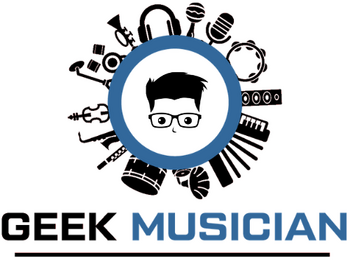
Maybe you’ve always wondered if you can use a DI box to reamp your microphone, bass, or guitar. Or perhaps you want to save some cash by using a DI Box for reamping instead of purchasing a reamp box.
Whatever your reason, one common topic that musicians and audio engineers seem to talk about quite often is reamping and whether you can do that with a DI box. So after some research on this subject, here is what I learned.
You can reamp with a DI box. Any DI Box can be used to record a clean audio signal at the first reamp stage. However, for better results, passive DI boxes are a better option for reamping.
Table of Contents
What Does Reamping Mean & How Does It Work?
Just as the name suggests, reamping is a technique that involves the taking of a pre-recorded audio track and re-amplifying it by passing it through an amp or effect units in order to come out with a tone that is a great fit for the song.
Although reamping is mostly used for guitars, recording and studio engineers reamp bass guitars, drums, and even vocals sometimes by running it through different outboard gears, effects, and more.
This is a widely used technique by guitar players and studio engineers and has been around for a while. It allows them to process an already recorded clean guitar sound through different guitar effect pedals and amps to get the right tone.
One thing you should note is reamping is actually a two-stage process. The first stage is referred to as the recording stage. This is where the clean signal is first recorded. And the second stage is known as the reamping stage.
The second stage is referred to as the reamping stage because this is where the actual technique of reamping is done.
Before you can reamp a particular track, you need to capture that track so that it can be subjected to reamping at a later time. This track must be a crystal-clean recording of your instrument and must not be processed through any effects. You can capture this track by using a DI Box.
After recording your guitar, you can now run them through an amp or guitar pedals to get your desired guitar tone. Having the pre-recorded track enables you to experiment with different amplifiers and pedals when mixing your song.
The great thing about reamping is that it allows you to decide on the perfect guitar tone later. Sometimes, you may get an excellent guitar riff idea as a guitar player. And you may spend so much time finding the right guitar tone that the idea gets lost.
In summary, reamping gives guitar players, recording, and mixing engineers the opportunity to try out different microphones and pedal combinations without the need to record the guitar multiple times.
It also opens up the possibility of experimenting with various unique guitar amp settings without worrying about the initial recording.
Do You Need a DI Box to Reamp?
There are multiple ways to reamp. Using a DI Box is one of the ways to reamp. So you don’t need a DI box to reamp. However, there are some benefits to using a DI box to reamp rather than using other means.
As I mentioned earlier, the reamping process is actually a two-stage process. The first stage of this process is known as the recording stage.
At the recording stage, you can use a DI box or an audio interface, or a combination of both.
If you decide to use an audio interface, what you have to do is plug your instrument directly into the audio interface and create two audio channels in your DAW that receive your instrument’s signal.
Use one of the channels to record the clean audio signal from your instrument so that you can reamp it later. You can add amp simulators and software effect pedals onto the second channel and get your desired reference tone.
The second channel is only there to help you play your instrument perfectly by providing you with the right tone.
However, a more traditional way to record your instrument is by using a DI Box. And by using a DI box for the recording stage, you get a much cleaner signal at a good level.
Some DI boxes, particularly passive DI boxes, can be used during the second stage of reamping. This is because they help you pass recorded tracks through your amplifiers. However, you can do without them.
What this means is instead of using a passive DI box, you can use a dedicated reamp box to complete the reamping process. I will talk more on reamp boxes so read along.
How a DI Box Can Be Used For Reamping
After recording a track using a DI box, most people rely on dedicated reamp boxes to continue the process of reamping. However, passive DI boxes can be used in place of reamp boxes at this stage.
This is because a DI box works in the opposite direction to a reamp box. Thus, when you reverse passive DI boxes, they can be used as reamp boxes for reamping.
Reversing a passive DI box simply means connecting it backward. All you need to do is to connect your input cable to the output side of the passive DI box while you pick the output from the input side. This concept has been demonstrated in the video below.
Dedicated reamp boxes work by converting line-level signals, which are usually balanced into unbalanced instrument-level signals with high impedance. The converted signals are then transmitted through guitar effects or an amp.
On the other hand, DI boxes convert unbalanced instrument-level signals with high impedance into balanced microphone-level signals with low impedance.
Therefore, in order for a DI box to work like a reamp box, you need to connect the DI box in reverse. However, only passive DI boxes can be connected in reverse.
Connecting passive DI boxes in reverse will lead to a large amount of signal boost. This is because running your DI box in reverse increases the voltage of the box significantly.
This leads to a corresponding increase in the strength of the output signal level of the device, thus leaving you with an extremely loud sound.
How To Reamp Guitars with a DI Box
You can do this by positioning your DI Box in the middle of your guitar and your amp or pedals. Doing this can help you preserve the sound output from the guitar. When this is achieved, you don’t need to re-record the audio all over again.
One important thing to note is reamping is not exclusive to only guitars. This concept can be applied to bass and keyboard signals as well.
Watch this video to learn how to connect a DI box when you need to record guitar signals.
After recording your signal using a DI box, you can then pass this recorded sound through your amplifier by using your passive DI box as a reamp.
Reamp Box vs. DI Box: Which is Better for Reamping?
When it comes to reamping a track after it has been captured by a DI box, you can choose to use a dedicated reamp box or a passive DI box. Though both devices can be used for reamping, which one does a better job?
I will address this question shortly, so read on. However, I cannot do that without talking briefly about what a reamp box is.
A reamp box is a device that has been engineered purposely for reamping a track after it has been recorded.
This reamp box directly receives a clean bass or guitar signal and transmits it to a guitar amplifier when needed at later stages of music production.
On the other hand, the primary function of a DI box is different from that of a reamp box. A DI box is built to capture guitar and bass signals and transmit them over cable runs without losing volume and high-frequency information.
However, when a passive DI box is connected in reverse, it functions just like a reamp box.
Though you can reamp your track by connecting a passive DI box in reverse, the sound reproduced may have lots of noise and distortion in it. This will cause you to have a bad listening experience.
Unlike a passive DI box, a reamp box is essential if you want to get professional results from your reamping.
This is because, even though you are playing pre-recorded audio, a reamp box makes your amplifier react just like a live guitar. Thus, not adding a reamp box to your reamping setup will lead to tone losses and impedance mismatch.
Therefore, a dedicated reamp box will give you better results than a DI box.
What Type of DI Box is Good for Reamping?
There are lots of DI boxes on the market. Both active and passive DI boxes. However, if you search for a DI box that can be used during both stages of the reamping process, you need to get a passive DI box instead of an active one.
Thus, in order to produce the best outcome during the reamping, you need to get a passive DI box that can deliver a signal with minimal noise and hum.
One of the best passive DI boxes for reamping is the Radial JDI Passive DI Box (Amazon). The Radial JDI is a passive DI box that delivers high performance in all applications. This gadget has exceptional noise rejection and signal handling.
Due to this, it can eliminate buzz and hum that may come from ground loops. It comes with a Jensen premium transformer. This transformer plays a role in the exceptional audio performance of this device.
The great thing about this passive DI box is that it can be used in professional audio studios for recording applications. This means it can be used during the first stage of reamping to preserve the signal that is being recorded.
Additionally, the Radial JDI can be used to achieve the same results as an actual reamp box during the second stage of reamping. All you need to do is to connect the box inversely and attenuate the signal that goes to the DI box’s output by -30 dB.
Conclusion
Reamping enables sound engineers and mixers to capture great sound from guitars, etc., and send them through an amp or any signal chain they prefer. You can successfully reamp without a dedicated reamp box.
This can be achieved by hooking up your passive DI box inversely. However, without using a dedicated reamp box, the outcome of your mix may not sound as clear and noise-free as someone who uses a dedicated reamp box for reamping.
Therefore, you would be best served for quality production by using a reamp box.

Hello, I’m Elijah. A writer on Geek Musician, based in Ghana-West Africa. I am a writer with a passion for research and reading. I usually spend my free time playing chess or watching movies. For more info, check out my about me page. Or read more of my articles here.

